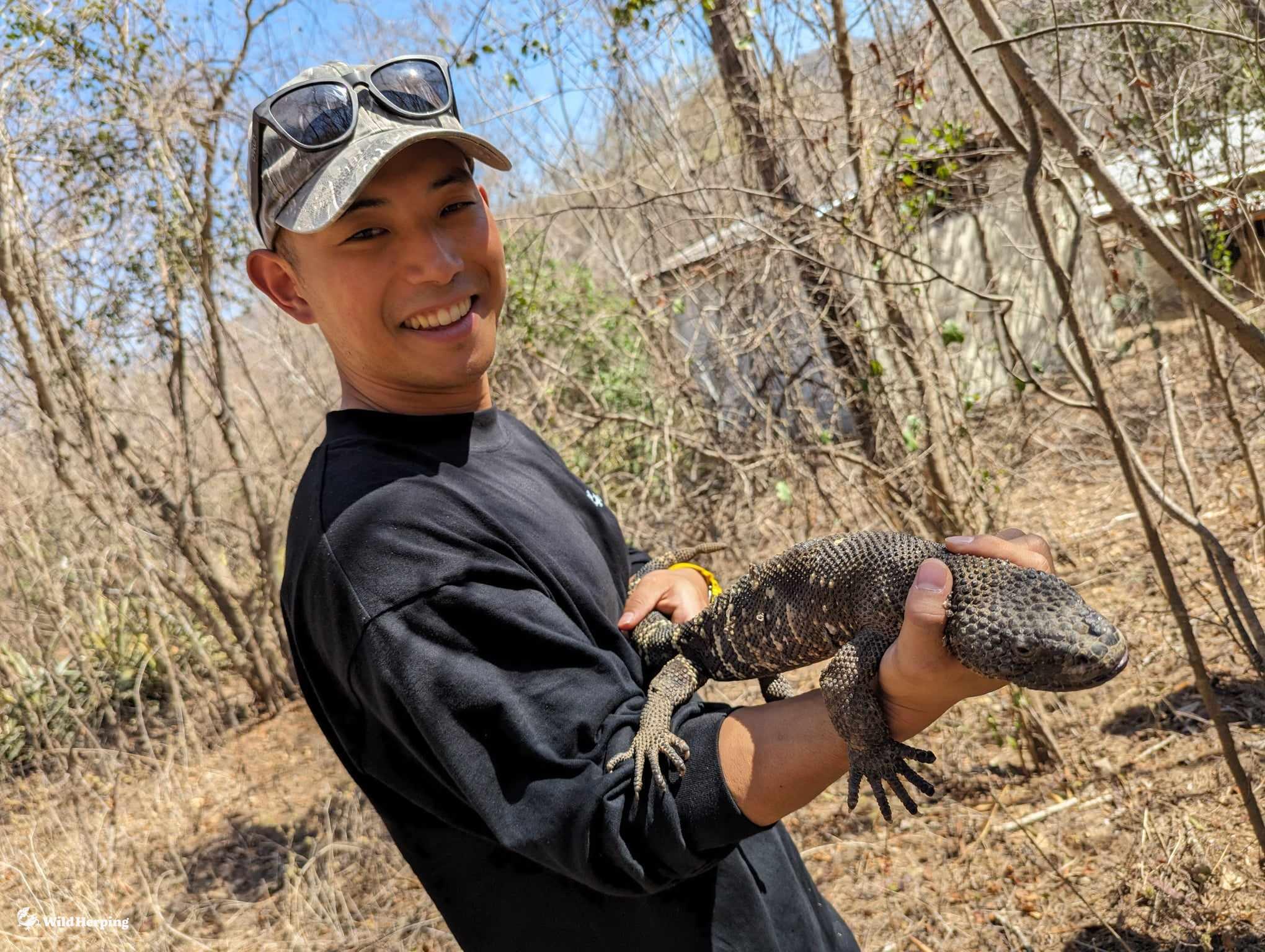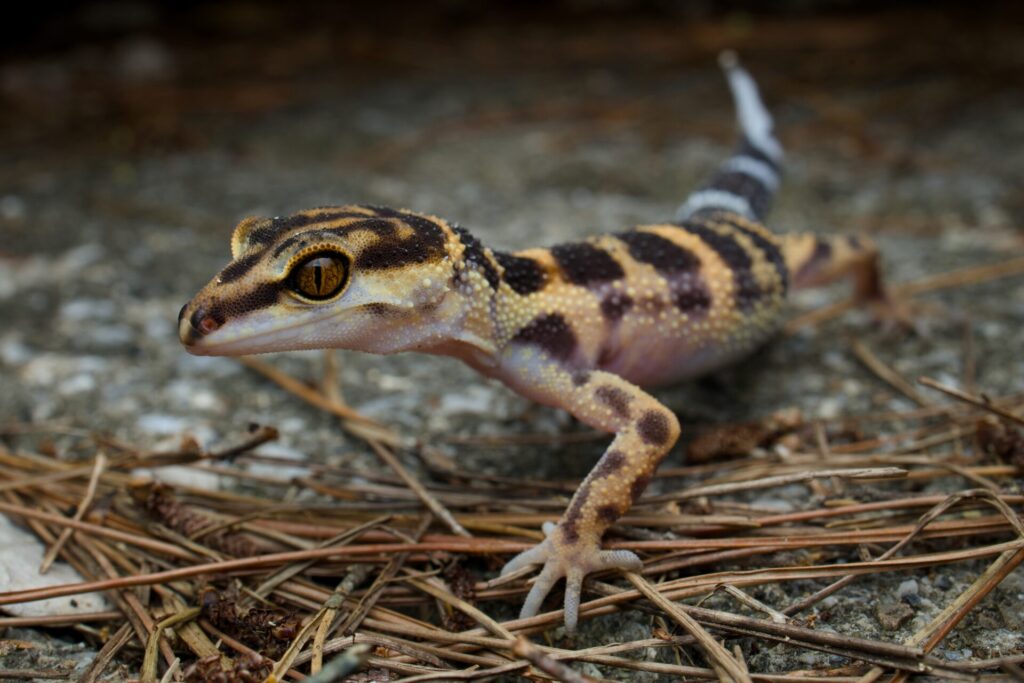
Tonakijima (渡名喜島), a small island located about one hour by ferry from Naha, the capital of Okinawa, is a hidden gem for nature lovers and herpetology enthusiasts. Surrounded by beautiful beaches and retaining much of Okinawa’s original landscape, the island offers not only breathtaking scenery but also warm and welcoming local culture.
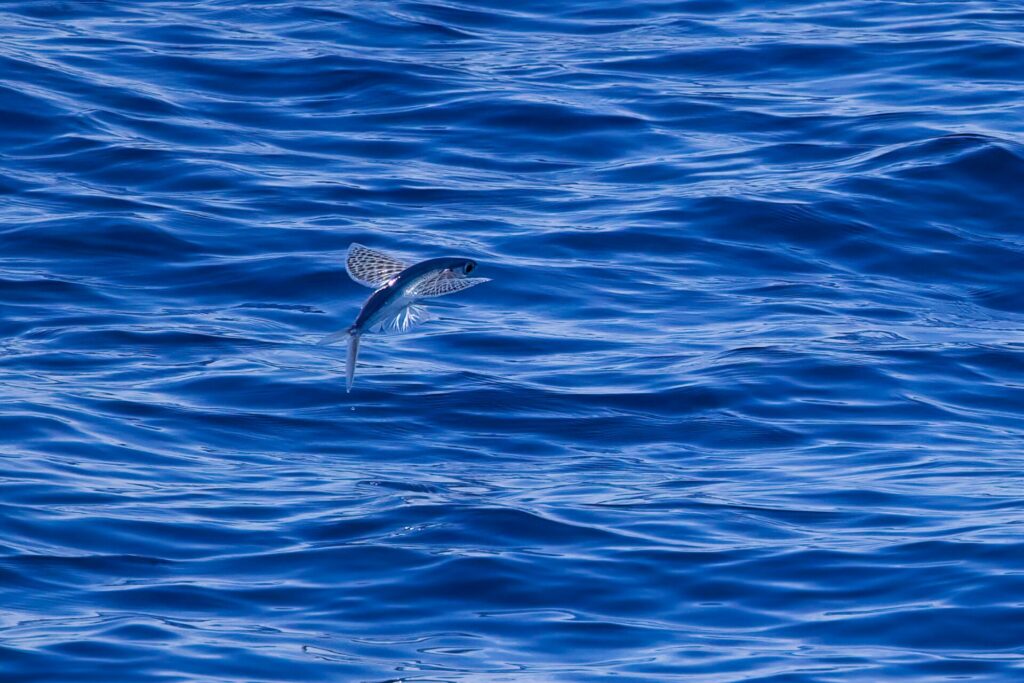
On this trip, my main target was the Spotted Ground Gecko (Goniurosaurus orientalis), a species of Japanese cave gecko (Goniurosaurus spp) found only on Tonakijima. With its striking orange and black banded pattern, it is one of the most visually impressive reptiles of the Ryukyu Islands. Because Tonakijima is such a small island, the gecko’s natural habitat is extremely limited, making it one of the rarest reptiles in Japan.
Sunset and the Start of Night Observation
After enjoying a beautiful sunset over the beach, I set out for a night of herping—searching for reptiles and amphibians under the cover of darkness.
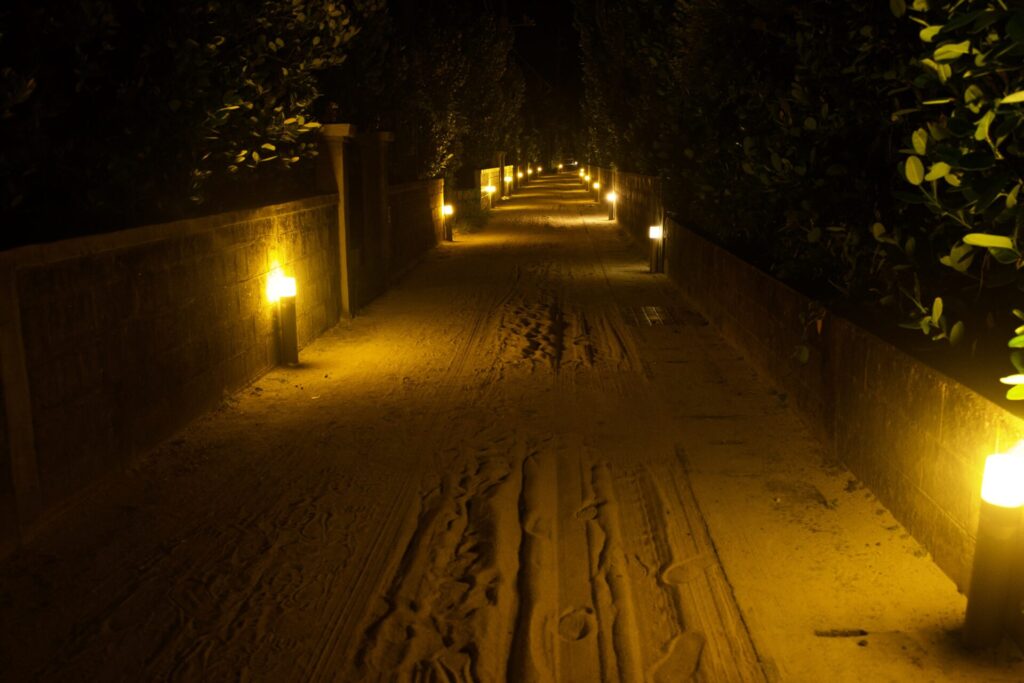
Wildlife Encounters on Tonakijima
Long-armed Scarab Beetle (Cheirotonus spp.)
The first animal I encountered was a member of the Cheirotonus beetles (Cheirotonus spp.), known in Japanese as “Higekogane.” Their curious appearance and unique name always leave a strong impression.
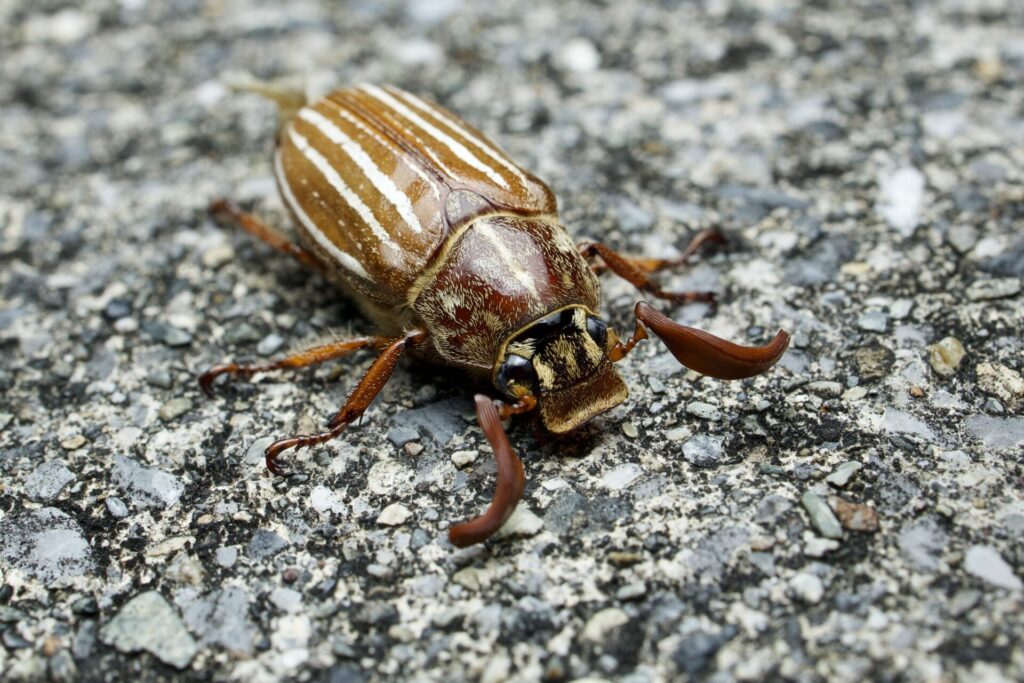
Coconut Crab (Birgus latro)
Soon after, I came across the largest Coconut crab (Birgus latro) I had ever seen. In fact, I encountered more than ten individuals that night, with the largest one nearly the size of a basketball. Photographing them up close was thrilling, though I couldn’t help but wonder what might happen if those massive claws grabbed me.
Coconut crabs begin life as plankton in the ocean, then move onto land as juveniles. They spend the rest of their lives on land, molting repeatedly as they grow into the world’s largest terrestrial crustaceans. Imagining the challenges they endure to reach such a size is truly awe-inspiring.
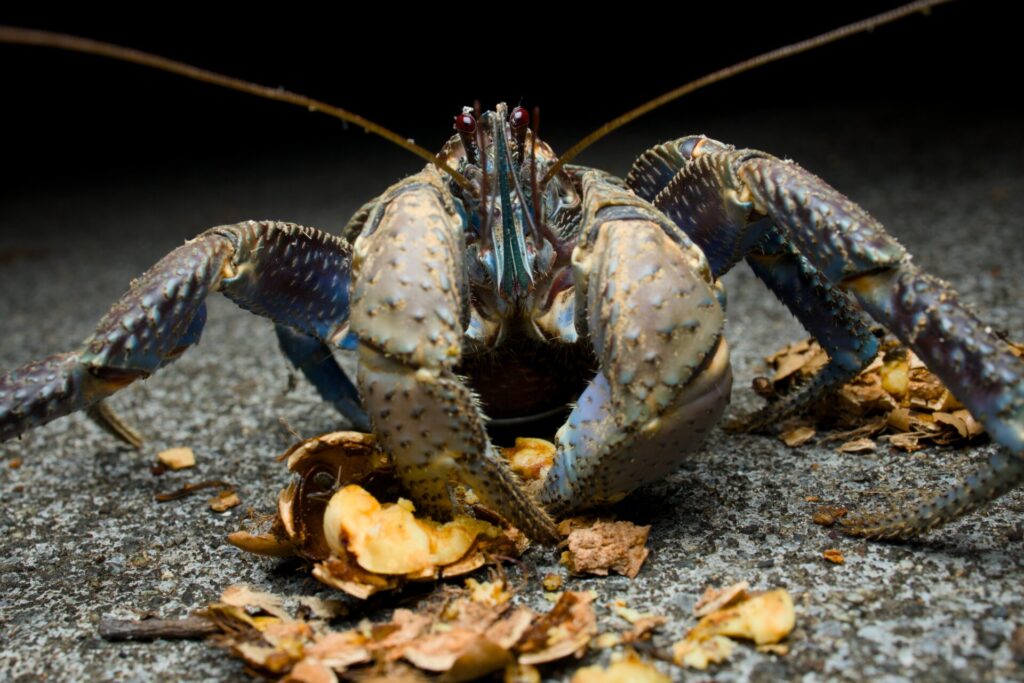
Hokou Gecko (Gekko hokouensis)
In the village, I also spotted the familiar Hokou gecko (Gekko hokouensis) clinging to guardrails. Its squared-back patterns confirmed the identification.
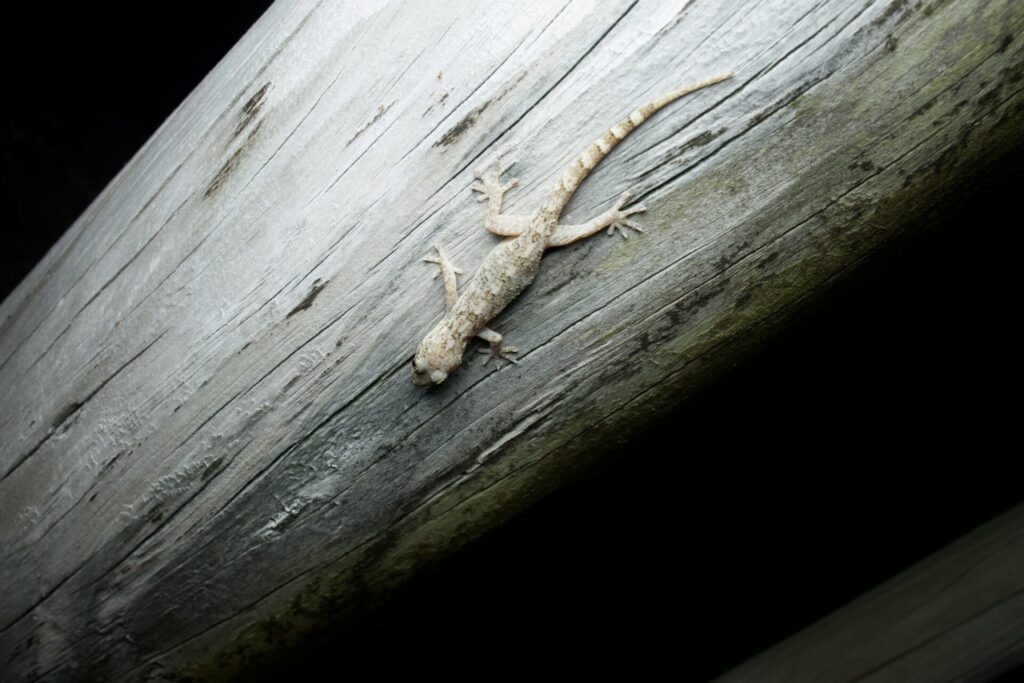
The Main Target: Spotted Ground Gecko (Goniurosaurus orientalis)
About an hour into the survey, my patience paid off. I finally encountered the star of the night: the Spotted Ground Gecko (Goniurosaurus orientalis).
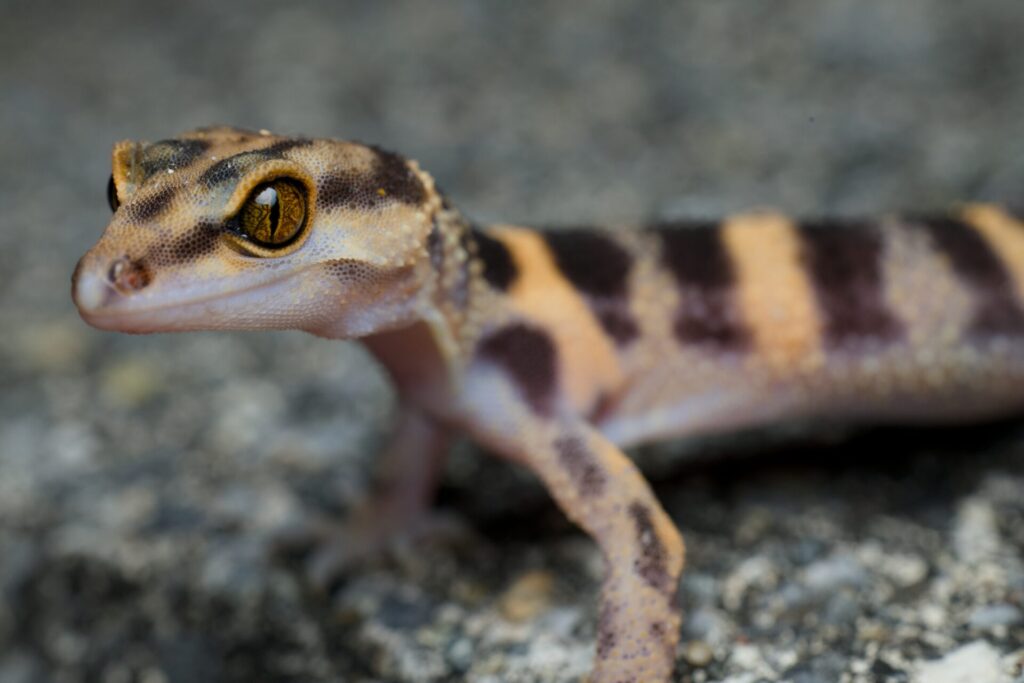
This gecko, a member of the Japanese cave geckos (Goniurosaurus spp), is especially famous for its vivid orange and black banding. Seeing it in the wild on Tonakijima was nothing short of magical. Why such a small and isolated island produced such a striking reptile remains a fascinating mystery.
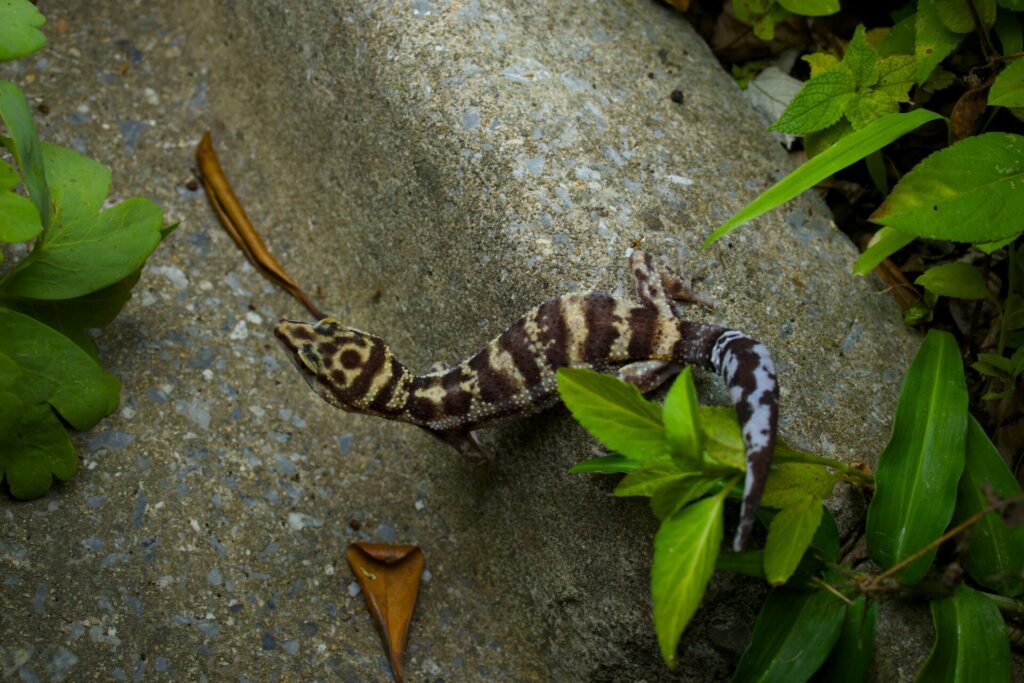
Observing a Complete Tail and Ecological Background
I was also fortunate to find an individual with its original tail intact. In Japan’s southern islands, many geckos show regenerated tails, as they often drop them to escape predators such as large centipedes. Because of this, spotting a complete-tailed gecko feels particularly lucky.
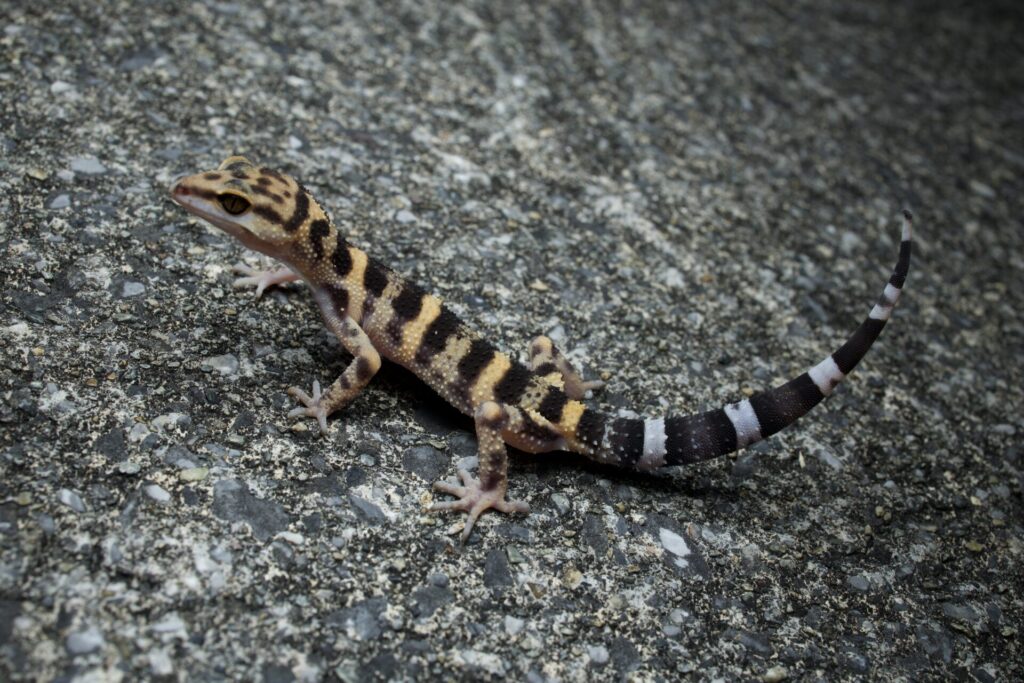
A Star-filled Sky over Tonakijima
One of the most unforgettable moments of the trip was gazing up at the star-filled sky after finishing the night’s herping. Since the village is concentrated in the center of the island, the beaches remain dark and quiet. Away from artificial lights, the sky was filled with countless stars—a perfect way to end the adventure.
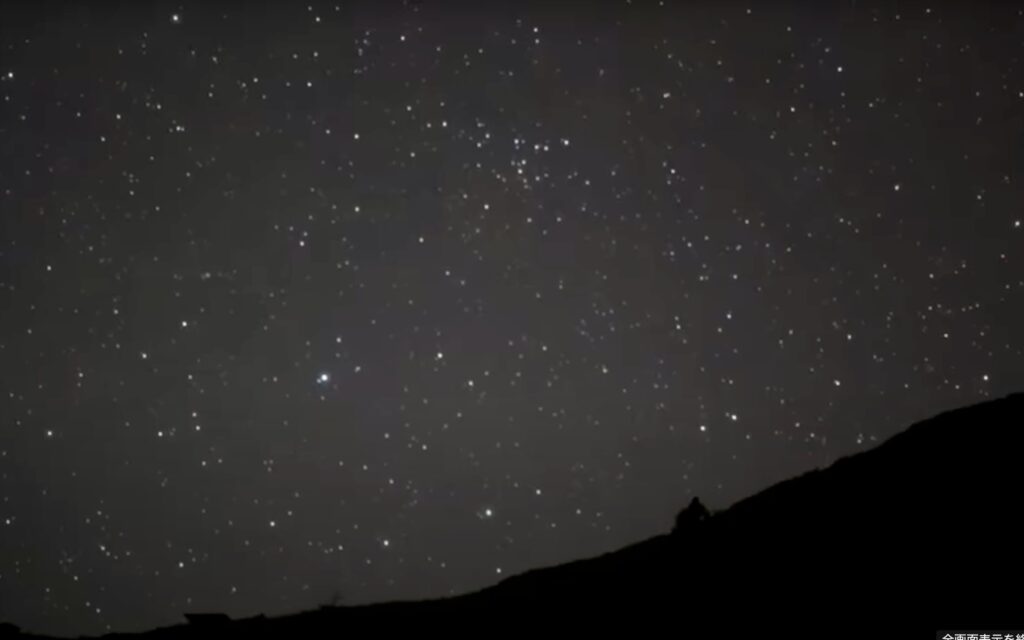
Conclusion|The Charm of Herping on Tonakijima
Herping on the remote islands of Okinawa, such as Tonakijima, is an extraordinary experience. These islands are home to unique and often endemic wildlife, including the Spotted Ground Gecko (Goniurosaurus orientalis), a true treasure of the Ryukyu Islands.
If you are interested in reptiles, wildlife, or eco-tourism, a visit to Tonakijima offers both rare encounters and unforgettable natural beauty. Responsible observation ensures that these fragile ecosystems and their endemic species can be preserved for generations to come.
We also share our reptile-hunting adventures on Tonakijima on YouTube. Feel free to check it out!

